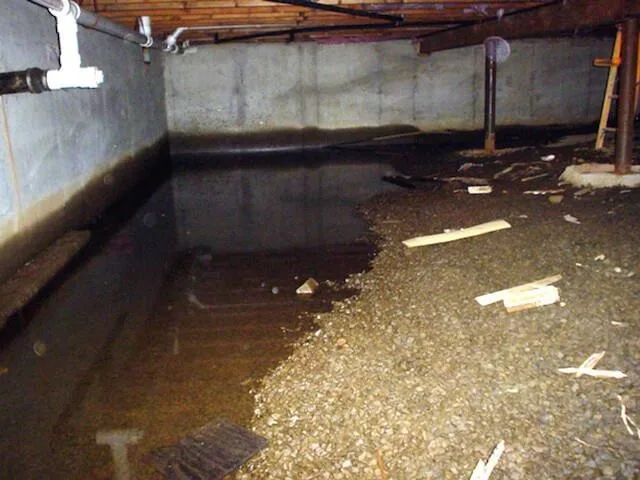Water damage in crawl spaces can be a serious issue because it often goes unnoticed for extended periods, leading to potential structural damage, mold growth, and other problems. For complex issues or extensive damage, consulting with professionals, including structural engineers and waterproofing specialists, is advisable. Additionally, considering the expertise of a flood water damage restoration company can expedite the restoration process and ensure that the unseen damage is properly remediated.
Repairing the unseen damage in crawl spaces requires a systematic approach. Here are steps you can take:
1. Identify and Fix the Source of Water Intrusion:
- Inspect Gutters and Downspouts: Ensure they are free of debris and directing water away from the foundation.
- Check for Plumbing Leaks: Look for any leaks or pipe damage in the crawl space. Fix any issues found.
- Address Surface Water: If there’s pooling water around the foundation, regrade the soil to direct water away.
2. Remove Standing Water:
- Use a sump pump to remove any standing water from the crawl space.
- Utilize wet/dry vacuums for smaller amounts of water.
3. Address Moisture and Humidity:
- Install a dehumidifier to maintain optimal humidity levels (ideally below 60%).
- Ventilation is crucial; consider adding vents or fans to improve air circulation.
4. Inspect and Repair Insulation:
- Wet insulation loses its effectiveness and can harbor mold. Replace any damaged insulation.
- Ensure proper installation, with vapor barriers facing the right way.
5. Check Structural Components:
- Inspect wooden beams, joists, and supports for signs of water damage or rot.
- Replace any compromised structural components.
6. Mold Remediation:
- If mold is present, hire professionals for remediation.
- Clean and disinfect affected areas. Consider using mold-resistant materials.
7. Seal and Waterproof:
- Apply a waterproof sealant to the crawl space walls and floor.
- Consider encapsulation – covering the crawl space with a vapor barrier.
8. Monitor Regularly:
- Install a moisture sensor or alarm to detect future leaks promptly.
- Regularly inspect the crawl space for signs of water damage.
9. Improve Drainage:
- Ensure proper grading around the home to encourage water runoff.
- Extend downspouts away from the foundation.
10. Professional Inspection:
- Consider hiring a professional inspector to assess the extent of the damage and recommend solutions.
11. Preventive Measures:
- Consider installing a French drain to redirect groundwater away from the crawl space.
- Regularly maintain gutters, downspouts, and other drainage systems.
12. Insurance Considerations:
- Review your homeowner’s insurance policy to understand coverage for water damage and crawl space repairs.
13. Consult with Experts:
- Engage with contractors, structural engineers, or waterproofing specialists for complex issues.
14. Educate Yourself:
- Learn about local building codes and regulations related to crawl space maintenance and repair.
15. Document the Process:
- Keep records of repairs, inspections, and any professional services rendered. This documentation can be useful for insurance claims or future home sales.
Conclusion
In conclusion, addressing water damage in crawl spaces is a critical undertaking to safeguard the structural integrity of a home and prevent health hazards associated with mold growth. Swift identification and rectification of the source of water intrusion, coupled with thorough repairs and preventive measures, are imperative for a comprehensive restoration process. Regular monitoring and maintenance contribute significantly to the long-term health of the crawl space.
Residents are encouraged to engage with local professionals who specialize in water damage restoration in Westfield to ensure a thorough and efficient restoration process. By doing so, homeowners can benefit from timely and effective solutions, bringing their homes back to a safe and habitable condition. Proactive measures, ongoing monitoring, and collaboration with experienced professionals contribute to the long-term well-being of homes in Westfield and surrounding areas.


